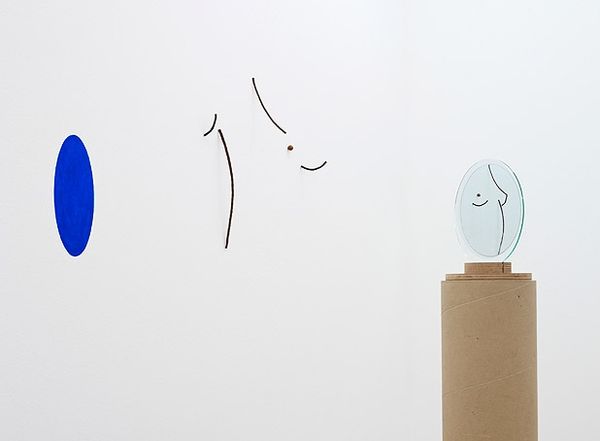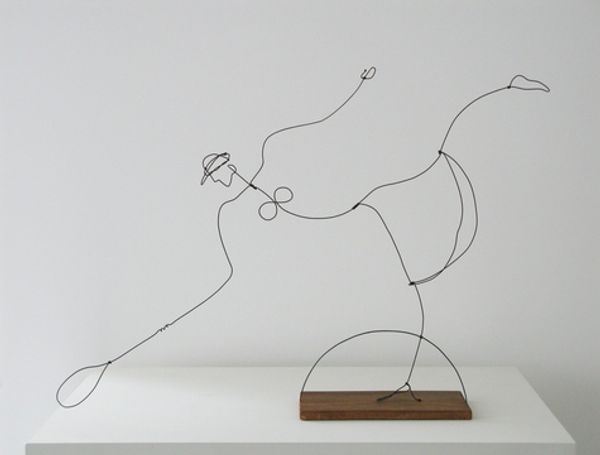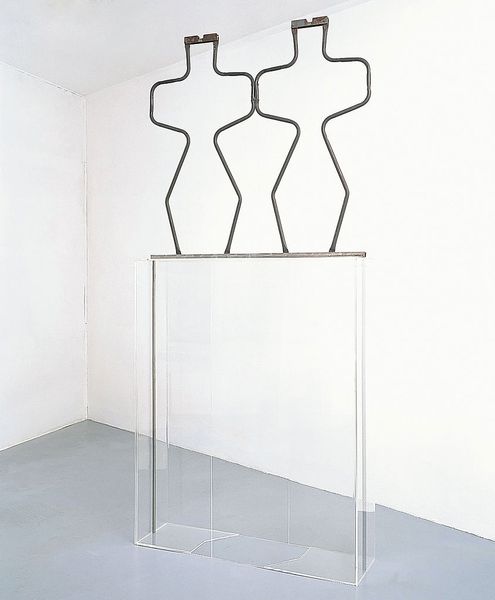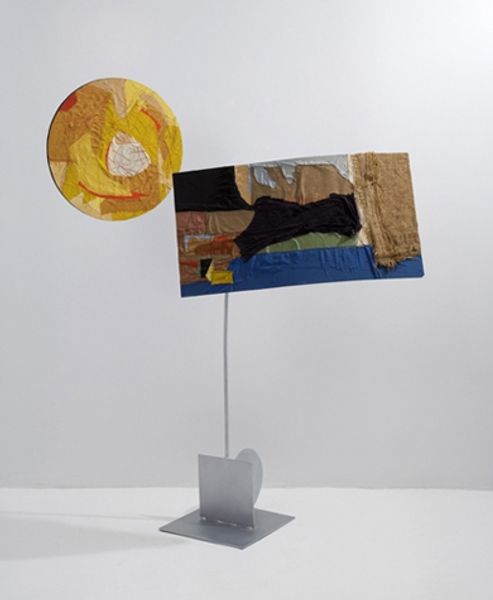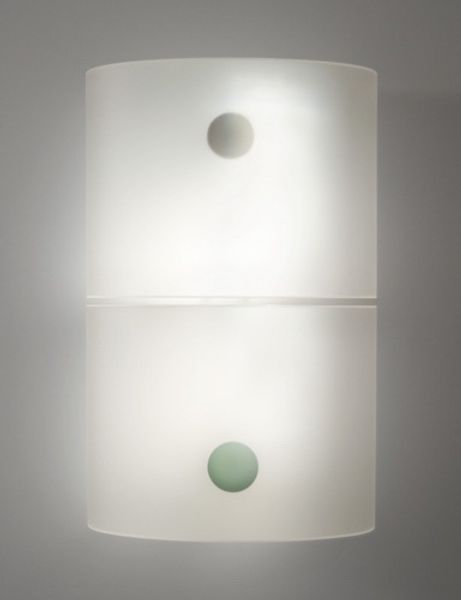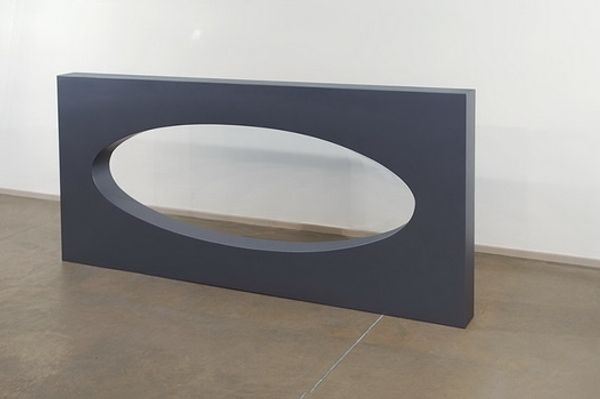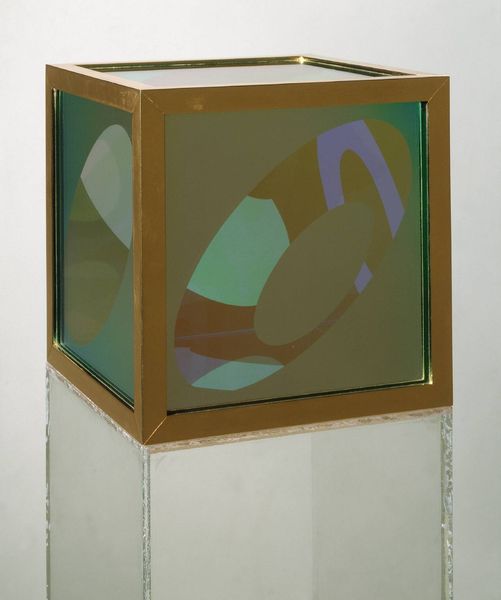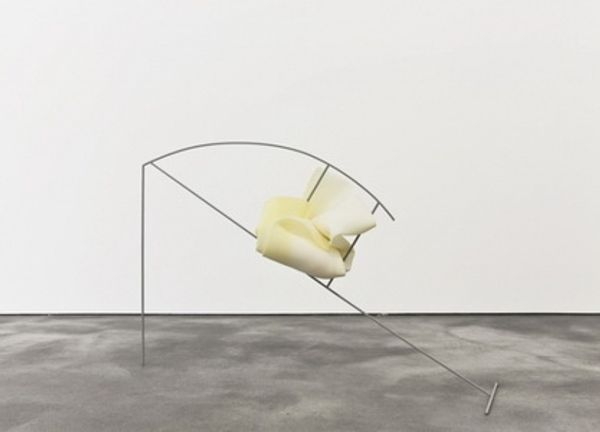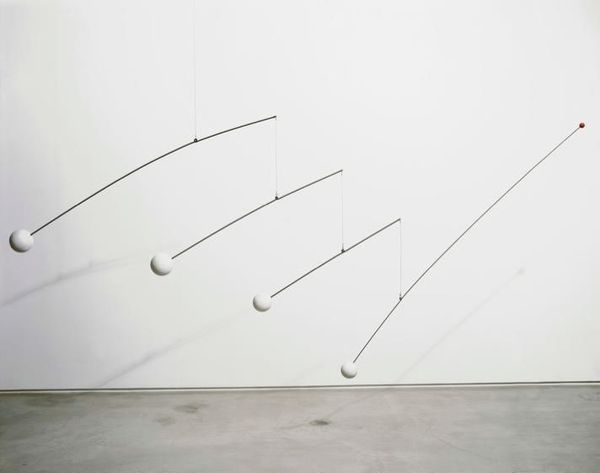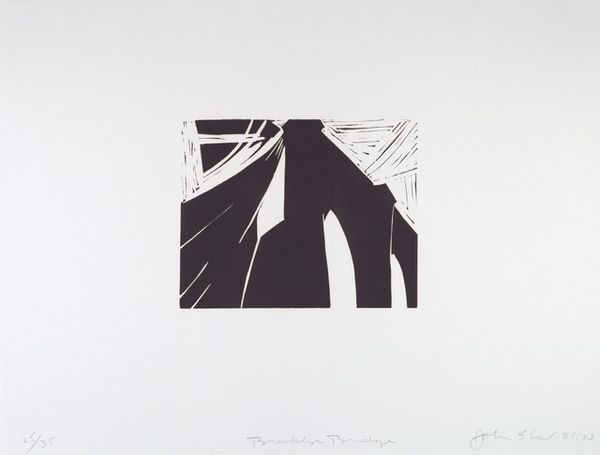
found-object, sculpture
#
portrait
#
clear focal point
#
clear graphic shape
#
shape in negative space
#
contemporary
#
conceptual-art
#
3d printed part
#
minimalism
#
white clean appearance
#
round design
#
found-object
#
bright focal point
#
form
#
curved arc
#
geometric
#
sculpture
#
minimal shading
#
white focal point
#
abstraction
#
line
Copyright: Markus Raetz,Fair Use
Editor: This is Markus Raetz's "Hasenspiegel" from 2000, a sculpture made from, what looks like, wire and a found mirror. It strikes me as surprisingly playful, despite its minimalist aesthetic. What stands out to you? Curator: What intrigues me is Raetz's elevation of simple materials into something that teases our perception. Wire, usually a mundane, industrial product, becomes a tool for illusion. And the mirror—a manufactured object itself—doubles the effect, quite literally. It's not just about the finished product but the act of making and our subsequent engagement with those processes. How does the combination of these ready-made elements alter your experience? Editor: It's like he's questioning the value we place on art made from traditional, "precious" materials, suggesting everyday objects can also be sources of artistic expression. The mirror particularly seems like an interesting industrial material since it can easily shift the meaning behind what the other materials may portray, and reflect. Curator: Precisely. And let's consider the social context. Conceptual art emerged questioning traditional artistic values and the art market. Raetz, in using found objects, challenges the preciousness associated with art, subtly commenting on commodification and artistic labor. Where do you see that tension play out in contemporary sculpture? Editor: Thinking about the use of readily available material makes me wonder what it takes to shift our attention from craft object to contemporary statement piece. Curator: And perhaps the piece makes that change in perception the true artwork. Seeing how Raetz elevates the ordinary reminds me to look critically at art's relationship with commerce and accessibility. Editor: This discussion has helped me realize that materials and means of production in art are much more culturally meaningful than I initially considered.
Comments
No comments
Be the first to comment and join the conversation on the ultimate creative platform.
